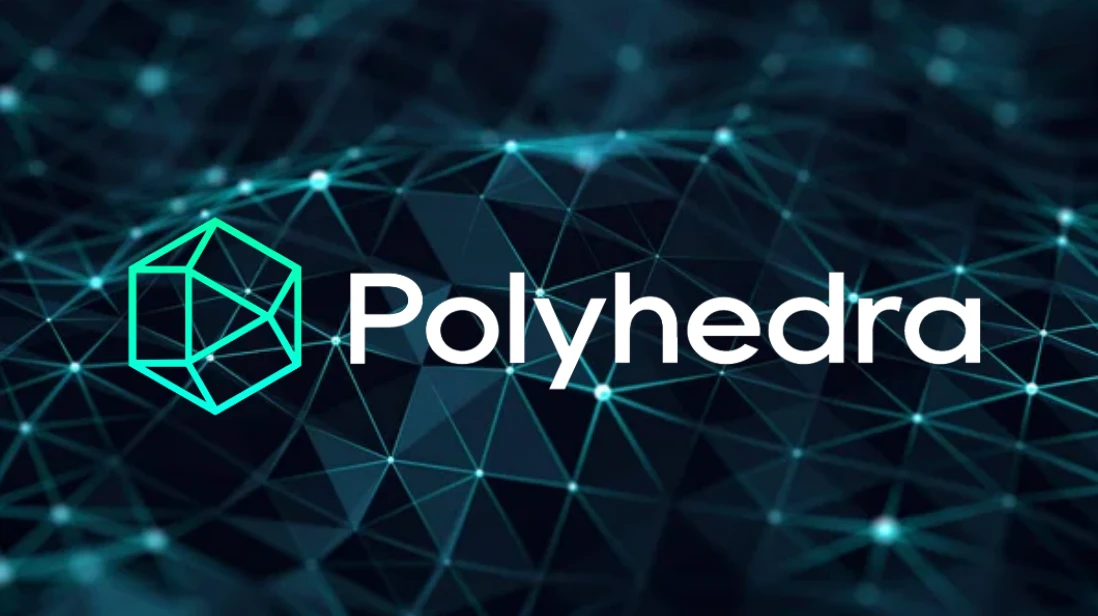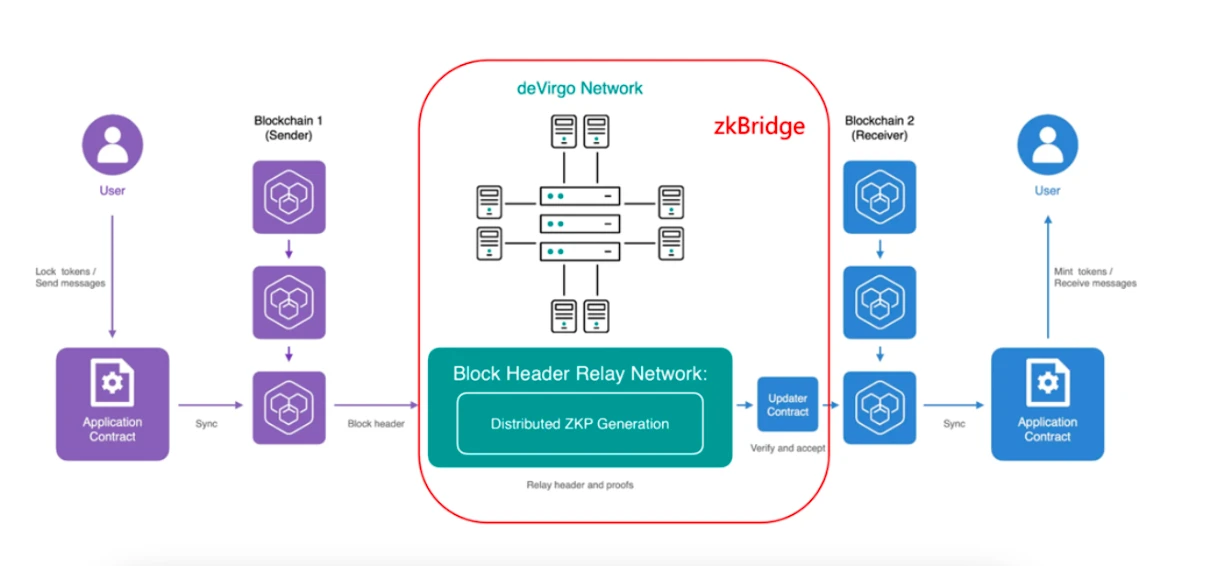Original|Odaily
Author|It’s over

On March 19, the full-stack zero-knowledge proof protocol Polyhedra Network officially launched its protocol token ZK and provided ZK airdrop rewards for early users and community contributors.
As the latest project of OKX Jumpstart, ZK was listed on many first-tier exchanges such as OKX, Bitget, and Gate on the day of TGE. As of the publication of this article, ZK is temporarily trading at 3.55 USDT, showing a relatively stable growth trend after surviving the short-term airdrop selling pressure.
A week before TGE, Polyhedra Network announced the completion of a US$20 million strategic round of financing at a US$1 billion valuation, led by Polychain Capital, Animoca Brands, Emirates Consortium, Arkstream Capital, Mapleblock Capital, Hashkey Capital, UoB Ventures, Symbolic Capital, Longhash Ventures, MH Ventures and Web3Port Foundation also participated in the investment.
Public information shows that this is the fourth financing completed by Polyhedra Network in more than a year.
In February 2023, Polyhedra Network completed US$10 million in financing, led by Binance Labs and Polychain Capital, with participation from Animoca Brands, Dao 5, ABCDE Capital, etc.
In April 2023, Polyhedra Network once again completed a $15 million PreA round of financing, led by Polychain Capital, with participation from ABCDE Capital, Sparkle Ventures, HashKey Capital, Foresight Ventures, Kucoin Ventures, NGC Ventures and Arcane Group.
In January 2024, Polyhedra Network also completed Series A financing, and the specific amount was not disclosed.
Counting the latest completed strategic round of financing, Polyhedra Networks disclosed historical financing total has reached US$45 million.
Why is Polyhedra Network so favored by so many celebrity VCs? Why can its valuation continue to rise? In addition to zkBridge, which is more familiar to users, in what areas can Polyhedra Networks comprehensive zero-knowledge proof technical capabilities achieve breakthroughs? In the following, we will gradually answer these questions by breaking down Polyhedra Networks existing and potential businesses.
Existing territory: starting from the interoperability field
Polyhedra Network is positioned as a full-stack zero-knowledge proof protocol. This positioning determines Polyhedra Networks vision to use the disruptive potential of zero-knowledge proof in terms of trustlessness, interoperability, scalability, etc. to optimize various aspects of the Web3 ecosystem. Domains and components.
Interoperability between multiple chains is the first area that Polyhedra Network is targeting. In April 2023, Polyhedra Network officially launched the mainnet Alpha version of zkBridge.
zkBridge is the industrys first trustless, efficient, secure and universal cross-chain interoperability protocol built using zero-knowledge proof technology. Different from the common cross-chain bridges in the industry that rely on multi-signature contract operation, zkBridge uses a zero-knowledge proof algorithm to replace the third-party trust assumption of traditional cross-chain bridges, and conducts rigorous proofs and verifications based on mathematics and cryptography. This enables the prover to safely and effectively let the receiving link receive a certain state transition that occurs on the sending chain without relying on any external security assumptions.

Official data shows that as of publication, zkBridge now covers 25 Layer 1 and Layer 2, has processed more than 20 million cross-chain transactions, and has reached cooperation with more than 80 projects in DeFi, GameFi, infrastructure and other fields. .
In addition to providing regular cross-chain fungible tokens, zkBridge also supports cross-chain transfer of NFTs, and plans to implement cross-chain support for Ordinals assets on the Bitcoin network in the second quarter.
In addition to the main product zkBridge, Polyhedra Networks current business landscape also includes zkLightClient, a light client based on zero-knowledge proof, a variety of zero-knowledge proof algorithms including devirgo, and zkPoR, a proof of user exchange reserve, etc.
What needs to be emphasized here is zkLightClient, which is a cross-chain infrastructure based on the LayerZero protocol. zkLightClient can be completely integrated with LayerZeros message transmission protocol, which means that application developers can easily build cross-chain applications on top of LayerZero by simply modifying its integration configuration to take advantage of Polyhedra Networks zero-knowledge proof technology.
From a deeper meaning, the technical principle of zkLightClient as a product result is even more groundbreaking - using zero-knowledge proof to optimize batch verification of BLS signatures, thereby significantly reducing the friction between verification nodes and full nodes. Communication data size.
In the case of zkLightClient, the client can verify 512 BLS signatures with a single zk-proof, which requires only 200 - 300 bytes of communication data, allowing validating nodes to sign every block, thereby significantly Reducing the time required for the Ethereum network to achieve finality - from one epoch (32 slots) to one slot (12 seconds) - provides a potential path for further expansion of Ethereum.
Recent Trends: Towards the Bitcoin Network
As its existing business lines mature, Polyhedra Network has begun to set its sights on other areas, trying to use its zero-knowledge proof technology advantages to bring more innovative results, and the Bitcoin ecosystem, which has attracted increasing market attention, has become The newest option from Polyhedra Network.
At the end of March, Polyhedra Network has reached a cooperation with Renzo to provide USD 1.8 billion in crypto-economic security for its Bitcoin interoperability protocol by integrating Renzo’s Liquidity Re-pledge Token (LRT) and the dual pledge mechanism of ZK tokens. To achieve trust-minimized Bitcoin interoperability. Polyhedra Network also revealed that pledgers of ZK tokens will receive benefits from cross-chain messages in the Bitcoin ecosystem in the future.
In addition, Polyhedra Network officials recently announced a new method to directly verify ZK proofs on the Bitcoin network.
With recent developments such as the approval of Bitcoin ETFs and the upcoming halving event, the markets interest in Bitcoin research has never been higher, but the Polyhedra Network team has discovered that existing Bitcoin network expansion solutions such as Layer 2 are currently verifying methods. There are critical flaws in all of them - especially the flaws highlighted in the BitVM white paper - the main problem is the possibility of collusion between provers and challengers, which can threaten the integrity of the proof, leading to the malicious creation of invalid proofs.
In order to solve the above problems, the Polyhedra Network team has launched an alternative solution, which is to use FRI (Fast Reed-Solomon Interactive oracle proofs of proximity)-based ZK proof as the last layer of on-chain verification. Compared with other ZK proof systems such as Groth 16 or Plonk, FRI proofs are more efficient and require less computing. This efficiency gain is crucial given the higher operating costs on the Bitcoin blockchain.
Polyhedra Network explained that looking forward to the future, the Bitcoin ecosystem will be similar to Ethereum, with a large number of Layer 2 expansion plans. However, the current Layer 2 of the Bitcoin network is facing the problem of lack of native ZK proof verification. Making up for this shortcoming is for It is crucial to fully realize the potential of the Bitcoin network. The solution proposed by Polyhedra Network is expected to solve the above, thereby achieving universal programmability on the Bitcoin network and fully unleashing the potential of Bitcoin.
Long-term planning: Scaling Computing
Earlier this month, Polyhedra Network detailed the project’s ultimate vision—Scaling Computing—in an official article.
In summary, Polyhedra Network hopes to use the exponential computing power provided by zero-knowledge proofs to accelerate the application of Web3 by eliminating the obstacles caused by the limitations of traditional computing methods. More concretely, Polyhedra Network hopes to make the development process using zero-knowledge proofs as convenient as launching a website through the various solutions it provides, helping developers to efficiently tap the full potential of zero-knowledge proofs.
Looking to the future, Polyhedra Network will gradually improve infrastructure such as the compiler zkCompiler and the proof generation service. zkCompiler aims to simplify the process of writing high-performance ZK proof circuits, while its proof generation service allows developers to deploy their zk circuits or codes to Polyhedra Network infrastructure. In terms of applications, Polyhedra Network plans to expand its services beyond the field of interoperability to include zkVM, zkEVM, zkML and other fields.
Judging from the roadmap, Polyhedra Network is expected to deliver a number of related results in 2024, including but not limited to:
Launch Polyhedra zero-knowledge proof generation service in the second quarter of 2024;
Enable basic smart contracts on Bitcoin using zero-knowledge proofs in the third quarter of 2023, release the zkVM compiler and zkVM instruction set architecture (ISA);
Integrating PWS with existing zkEVM in Q4 2023…
New narrative, new beginning
Going back to our original question, why is Polyhedra Network so favored by so many star VCs? Why can its valuation continue to rise? After ZK went public, fdv even reached more than 3 billion US dollars?
In short, Polyhedra Networks vision is not limited to zkBridge, so its value cannot be measured by cross-chain interoperability protocols. Its value should stem from the optimization potential of zero-knowledge proofs for various fields in the Web3 world.
In the long term, Polyhedra Network after ZK TGE is moving towards a new narrative and opening a new chapter, and in this process, all parties operating around ZK and the Polyhedra Network ecosystem are expected to gain continued value. Give back.










